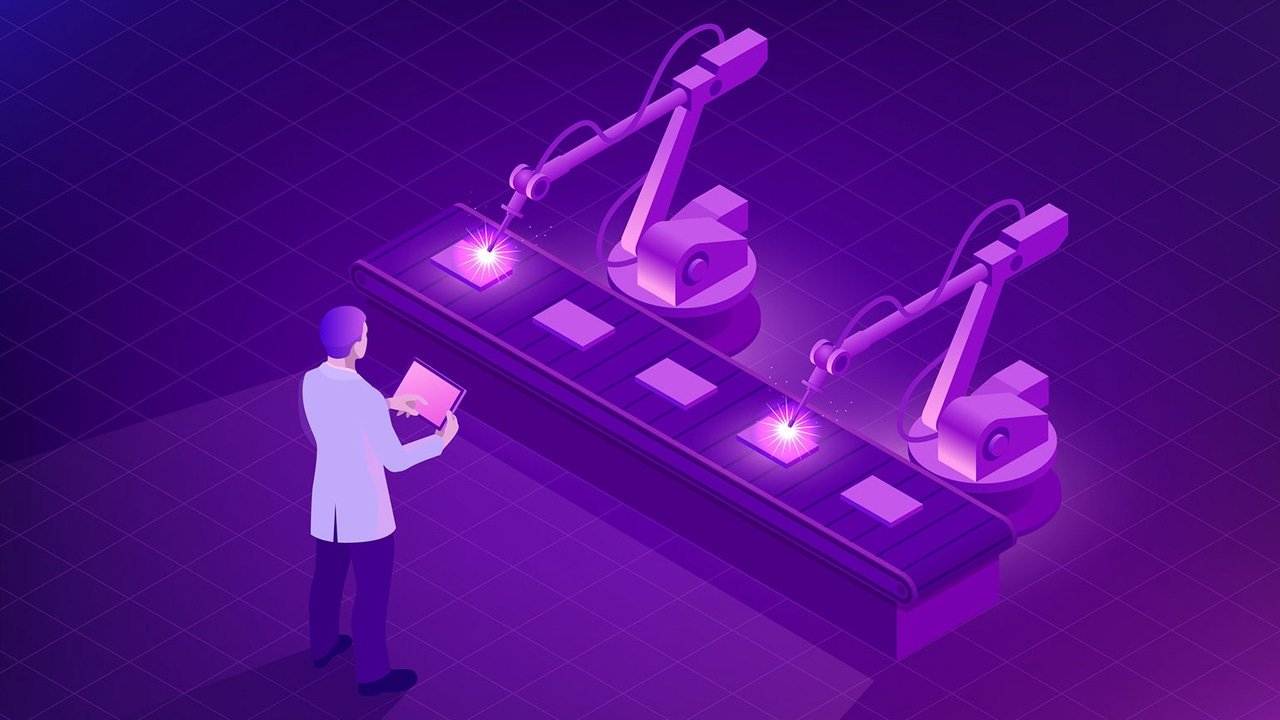How IIoT Is Transforming Product Design and Manufacture
Coompanies have made strides in manufacturing automation, intelligence and innovation that are evident everywhere in the end to end workflows of manufacturing.
June 7, 2021

By Mary Shacklett
First introduced by German scientists as in 2011, the concept of Industry 4.0, or the Fourth Industrial Revolution was crafted as a strategy for the government.
The priority was on flexible mass production that included agile customization of products, coordination of humans, machines, devices and sensors, information transparency and the ability to make decisions at decentralized points of manufacture.
Facilitating Industry 4.0 required new manufacturing processes, technologies, training and systems. The industrial Internet of Things (IloT) plays a pivotal role in connecting the pieces, and in enabling decentralized processes and decision making.
Now, 10 years later, companies have made strides in manufacturing automation, intelligence and innovation that are evident everywhere in the end to end workflows of manufacturing.
Let’s take a look.
Engineering and Product Design for IIoT—and Digital Twin
Conceiving a new product, then building the product and testing how it works, are two different things.
Too often, engineering departments release a product design, and then a separate team of engineers reviews the design and requesst product changes, based on how the product works in actuality. While this iterative design can benefit product quality, revisions cost time and money.
Now with IIoT virtual digital twins, product designers can execute what-if virtual representations to see how products perform in various scenarios. The digital twin, which is a computer program, injects real-world data about a physical object or system and then outputs predictions or simulations of how that object or system will work.
Digital twin simulations improve and revise products. Because digital twins are product simulations, using them can eliminate time lost on the manufacturing floor when flaws are discovered and are more expensive to fix.
“Real-time data from the digital twin lets the designer “see” in real time how [product] features are being used or ignored, and patterns of misuse that might be due to poor documentation,” said W. David Stephenson, principal of Stephenson Strategies, an IoT consultancy. “Frequently, the product can be updated digitally, through software updates, reducing maintenance problems and increasing customer satisfaction and loyalty.
Tesla, for example, does this with over-the-air software updates.”
Automation, Real-Time Visibility on the Manufacturing Floor
A central premise of Industry 4.0 is decentralized manufacturing.
From an IT standpoint, this means that more compute is running remotely at the edges of the enterprise, and outside of central data centers. It is IIoT technologies like sensors, robotics, automation and video streaming that facilitate edge manufacturing.
On the manufacturing floor, the focus is an automating manufacturing processes and on visibility into that process for efficiency and cost savings. Especially in repetitive manufacturing environments, where a single item such as a box of breakfast cereal or a roll of paper towel is repeatedly manufactured, IIoT robotics have automated assembly lines by faithfully executing the same operations over and over, without deviations that can introduce error.
This automation speeds processes and can reduce costs of manufacture, but the caveat is that humans must be able to intervene when necessary.
This is where real-time visibility comes in.
Sensors built into robotics and other automated manufacturing equipment issue alerts when a particular process or piece of equipment is signaling the possibility of failure. Since the alerts are predicting an issue before it occurs, preemptive maintenance that prevents failure can be performed.
IIoT visibility enabled by sensor and video streams plays a critical role, as the average downtime cost for repetitive manufacturing has been estimated at $6,000 perhour.
Production plants are also outfitted with cameras that stream video from points throughout each plant. A manufacturing supervisor, if he/she is away from the floor, can observe a manufacturing process that might be in trouble from his or her smart phone, and immediately respond. Equipment, products and other enterprise assets on the manufacturing floor, and in secure equipment cages, can also be continuously surveilled with camera video streaming for security purposes.
“It’s not just enough to do the offline analysis, because the goal is to determine a problem downstream well in advance, which requires real-time monitoring of event information for critical components,” said Evan Guarnaccia, a SAS solutions architect at SAS, “It could be a small electric motor which, when it has a problem, will trigger a greater failure down the line, or it could be a very expensive component.”
Proactive IIoT With Video Streaming
Early IIoT was built around sensors, robotics and automation. These IIoT technologies will continue to play crucial roles as more manufacturing is performed in decentralized factories.
Down the line, we can expect to see more video streaming that allows supervisors and managers to observe practices in plants where they physically cannot be present, and to respond proactively to what they see.
Historically, manufacturing engineers experienced challenges when they tried to communicate with one another about a product design. Today, a manufacturing engineer can video-stream to a design engineer who might be half a world away. In a hands-on way, a manufacturing engineering can actually demonstrate in real time a product complication to the design engineer.
This facilitates more timely and effective product revisions—and it adds to the power of the digital twin, which gives engineers on both the design and the manufacturing sides of the discipline a virtual tour of the product before a single chip, bolt, engine or user interface is installed.
You May Also Like






